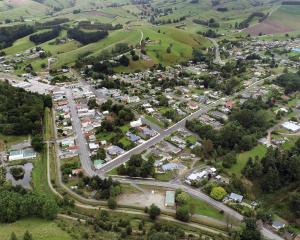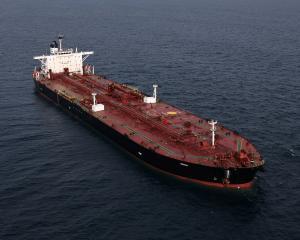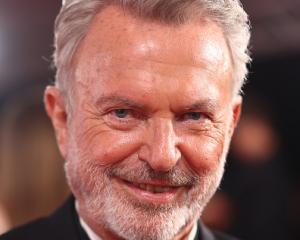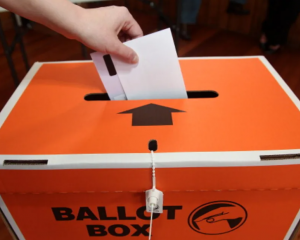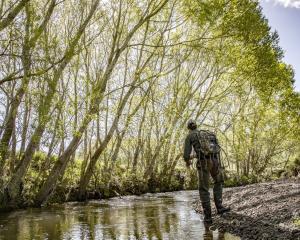
Christopher Luxon is heading to Asia for a diplomatic double-header.
New Zealand’s prime pinister is attending both the East Asia Summit (EAS) gathering in Malaysia and the annual Asia-Pacific Economic Co-operation (Apec) leaders’ meeting in South Korea.
This year, the events are being held just days apart, making participation in both meetings especially convenient.
For Luxon, the twin summits will provide ample opportunity to meet, greet and hold more substantive talks with counterparts from around Asia and beyond.
The EAS meeting in Kuala Lumpur, which started yesterday, was first on the agenda, .
Designed to dovetail with existing annual gatherings of the Association of Southeast Asian Nations (Asean), the EAS format brings together the 10 Asean members and eight other countries from the wider region: Australia, China, India, Japan, New Zealand, Russia, South Korea and the United States.
This year marks the 50th anniversary of New Zealand’s diplomatic ties with Asean, a highly successful partnership that began in the aftermath of the Vietnam War. A special Asean-New Zealand Commemorative Summit will be held as part of the activities in Malaysia.
Wellington has largely adopted a bipartisan approach to relations with Asean. For decades, governments from the political left and right have prioritised consistency in New Zealand’s bilateral engagement with the bloc.
With relations now institutionalised, it is now simply an expectation that New Zealand prime ministers show up to Asean events — and make regular visits to Southeast Asia generally. In his two years in office, Christopher Luxon has already visited six of Asean’s members. Meanwhile, beyond high-level diplomacy, ties have also flourished in areas such as education, development and defence.
While New Zealand’s original focus with Asean was security, economics now underpin the relationship.
When taken as a whole, the Asean countries are New Zealand’s fourth-biggest trading partner. New Zealand’s strongest trade ties are with Singapore and Indonesia — but other nations such as Malaysia, Thailand and Vietnam are catching up.
New Zealand’s exports to Asean are currently booming, this year passing the $NZ10billion mark for the first time — an increase of a third just since 2021.
The export bonanza is being driven by dairy and other key food exports such as fruit and meat. However, as a wealthier middle class in Southeast Asia continues to develop, services exports — led by inbound tourism to New Zealand — are also rising rapidly and now represent a fifth of the overall total.
It does not stop with exports: the Asean states are also New Zealand’s biggest source of imports, now totalling almost $19b and outstripping even China. There has been a particularly steep rise in recent years, driven by the closure of New Zealand’s Marsden Point oil refinery in 2022. This has led to New Zealand importing refined fuels from Asia, instead of raw product that typically came from the Middle East.
Moreover, Singapore is the second-biggest source of foreign investment in New Zealand. Bilateral relations look set to deepen even further: Singaporean Prime Minister Lawrence Wong recently visited Auckland to sign a New Zealand-Singapore Comprehensive Strategic Partnership (CSP).
More broadly, this year’s EAS gathering is significant because it marks the 20th anniversary of the group’s inception. The inaugural EAS meeting in 2005 was held in Kuala Lumpur, with Russian President Vladimir Putin in attendance. This year’s meeting will also be held in the Malaysian capital, and reports suggest Putin is keen to join once again.
All Asean leaders have confirmed their attendance at the EAS this year, while Chinese Premier Li Qiang and Indian Prime Minister Narendra Modi are also expected in Kuala Lumpur.
United States President Donald Trump is also apparently eager to join the EAS gathering — but only if he can preside over the formal signing of a peace deal between Cambodia and Thailand.
After the EAS, attention will turn to the Apec leaders’ meeting in the South Korean city of Gyeongju, which begins on October 31.
Apec will involve many of the same Asia-Pacific leaders, but the membership also includes others such as Taiwan, Canada, Chile, Mexico and Peru.
Apec remains New Zealand’s main window into Latin America — a continent Wellington has largely left untapped. Still, this may be about to change: in December, a new 29-hour marathon flight by China Eastern will launch to connect Shanghai and Buenos Aires via a stop in Auckland. The service will be New Zealand’s second link with Latin America, complementing an existing service by Latam Airlines from Auckland to Santiago.
Back in South Korea, a major sideline meeting between Trump and Chinese President Xi Jinping is expected to be held at Apec.
This promises to be a last-minute, high-stakes diplomatic showdown. It will be the final chance for a deal to be made between Trump and Xi that would halt plans by the US to impose 100% tariffs on China from November 1.
Trump has promised a "fantastic deal", adding that it was going to be "fantastic for the whole world".
A trade truce between Beijing and Washington would be particularly good news for New Zealand, which relies on China as its biggest trading partner.
Overall, the world economy has shown surprising levels of resilience to US tariffs imposed so far in 2025. However, the Chinese economic growth rate fell below the 5% mark in the third quarter. Trump‘s planned new 100% punitive tariff on China could potentially derail economic growth across the entire Asia-Pacific region.
This would be a nightmare for the New Zealand PM, who has been relying on export-driven success to prop up a sluggish economy at home.
Luxon will be hoping for some face time with Trump at Apec to raise tariff concerns of his own.
Since August, the US has imposed tariffs of 15% on New Zealand, a rate that is 5% higher than neighbouring Australia. This puts New Zealand exports to the US at a disadvantage, especially in areas where it competes with Australia, such as red meat and wine.
Trump is the dealmaker-in-chief, and will be expecting New Zealand to put its money where its mouth is if it wants any relief.
With defence minister Judith Collins recently visiting Washington, a wider deal that goes beyond trade cannot be ruled out. New Zealand unveiled a new $12b Defence Capability Plan in April, and in August it announced the purchase of five new US Seahawk maritime helicopters at a cost of $2b.
Of course, neither EAS nor Apec are just about Trump — but whether he attends or not, the US President will be front and centre of many sideline conversations.
Luxon will have a busy week.
— Geoffrey Miller is the Democracy Project’s geopolitical analyst.

